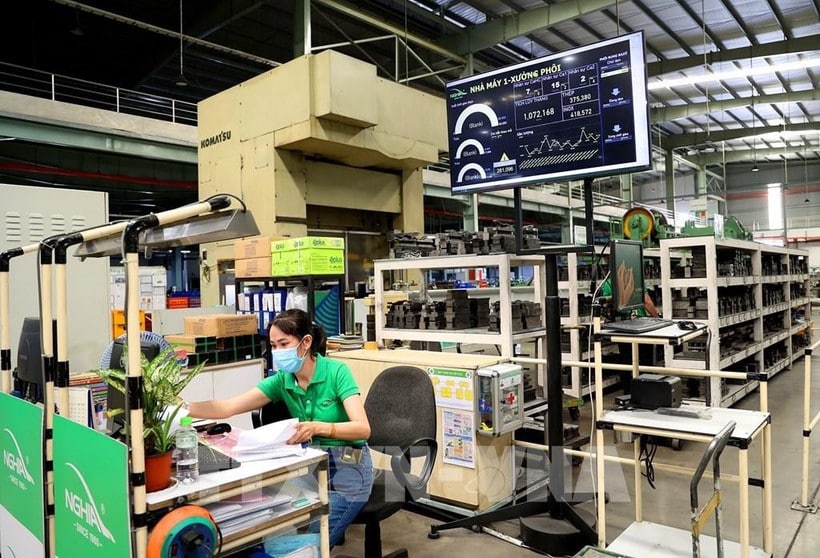
The industrial sector is entering a new era where “green growth”, “sustainable development,” and “digital transformation” are no longer abstract concepts but urgent requirements for survival and long-term success.
In a rapidly changing global environment, marked by fierce competition and mounting environmental pressures, the shift toward green production has become inevitable.
Green growth in manufacturing is essentially the restructuring of production activities to improve resource and energy efficiency, and reduce greenhouse gas emissions and waste. This transformation involves adopting clean technologies, developing environmentally friendly products and services, and creating green jobs, all aimed at decoupling economic growth from environmental degradation.
To achieve this, businesses need to build their strategies with three concrete actions, namely technological innovation, energy efficiency, and product structure shifting toward greener goods.
According to experts, implementing the three actions on green growth is costly in terms of time, effort and resources. It is not an easy task, as businesses tend to prioritise profit maximisation and cost reduction, often at the expense of environmental concerns. Therefore, the government should play a key role in promoting and supporting industrial enterprises in adopting green growth strategies, as this is the most fundamental aspect of the process. However, the level and method of support for industrial businesses in implementing green growth may vary depending on the company’s capabilities, available resources, and applicable policies.
Phan Dang Tuat, Chairman of the Vietnam Association for Supporting Industries (VASI), stressed that technology innovation is a critical demand for industrial firms amidst global integration. He noted that upgrading technology not only enhances product quality and market competitiveness but also reduces fuel consumption and minimises environmental impact.
Green technologies, such as closed-loop production systems in which waste from one process becomes input for another, are expected to become central to industrial development. Advances in green chemistry, renewable energy use, and waste recycling are also seen as key enablers of sustainable growth.
Tuat added that while government regulations are crucial, real progress depends on growing consumer demand for green products.
Enterprises will fully embrace the transition only when the market rewards eco-friendly production. International experience shows that a combination of supportive policies and rising green consumerism creates the strongest incentives for firms to innovate.
In Hanoi, awareness among local industrial producers is rising. According to Vice Chairman of the Hanoi Association of Key Industrial Products Manufacturers (HAMI) Nguyen Duc Minh, 71% of member enterprises are aware of the city’s plan implementing the National Green Growth Strategy. However, many firms still undervalue outcome indicators such as reduced emissions, with one-third of businesses considering them unimportant.
Some large energy users, such as the Hanoi Rubber JSC, Goshi Thang Long Co. Ltd., Sumitomo Co. Ltd., and Saigon – Hanoi Beer Co., have actively implemented energy-saving measures. Yet overall energy consumption among Hanoi’s industrial enterprises remains higher than the global average and similar to the national average. Surveys over the past three years show energy use has increased by around 10% annually in many firms, with some reporting up to 30% growth and others showing no change at all.
Despite these challenges, experts believe awareness-raising and consistent policy support will gradually shift corporate thinking from short-term cost concerns to long-term sustainability. Minh expressed his hope that more enterprises will soon invest in modern, energy-saving production technologies and optimise equipment to use renewable fuels./.
(VNA)




